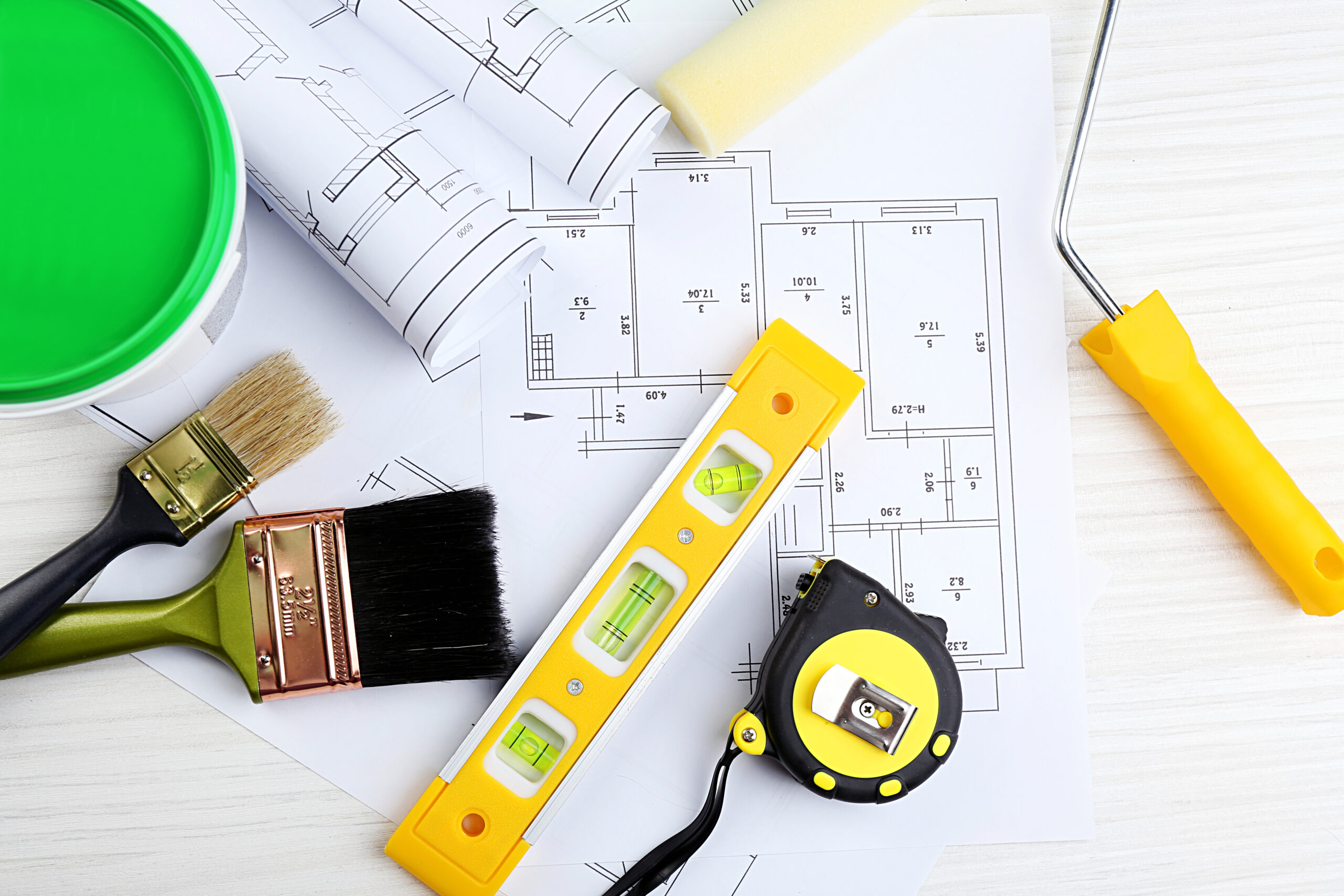Setting the Stage for Transformation
Large-scale renovations are transformative endeavors that breathe new life into existing spaces. Whether you’re revitalizing an aging home, renovating a commercial property, or updating a community space, the journey begins by recognizing the need for change. By acknowledging the current state of your property and envisioning its potential, you set the stage for a remarkable transformation. Every renovation project is unique, with its own set of challenges and opportunities. Understanding the scope of your renovation involves assessing the size and scale of the project, as well as its impact on your property and surroundings. By recognizing the scope of work required, you can better prepare for the tasks ahead and set realistic expectations for outcomes.
Planning Phase
- Assessing Your Needs and Wants: Before embarking on a large-scale renovation, it’s essential to define your goals and priorities. What do you hope to achieve with the renovation? Are you looking to improve functionality, enhance aesthetics, or increase property value? By clearly defining your objectives, you can prioritize areas for renovation and allocate resources accordingly.
- Setting a Realistic Budget: Renovations can be costly endeavors, so it’s crucial to establish a realistic budget from the outset. Consider all potential expenses, including materials, labor, permits, and unforeseen contingencies. By setting a budget and sticking to it, you can avoid overspending and ensure that your renovation stays on track.
- Research and Hiring Professionals: Large-scale renovations often require the expertise of professionals, including architects, designers, and contractors. Take the time to research and vet potential candidates, seeking out individuals or firms with proven experience and a solid reputation. By hiring skilled professionals, you can ensure that your renovation is executed to the highest standards of quality and craftsmanship.

Designing Your Dream Space
- Collaborating with Designers and Architects: Design is at the heart of any renovation project, and collaborating with designers and architects is key to bringing your vision to life. Work closely with these professionals to communicate your preferences, ideas, and goals for the space. By sharing your vision and providing feedback throughout the design process, you can ensure that the final result meets your expectations.
- Incorporating Functional Design Elements:While aesthetics are important, functionality should not be overlooked in large-scale renovations. Consider how the space will be used and how various design elements can enhance usability and efficiency. By incorporating functional design elements such as storage solutions, ergonomic layouts, and durable materials, you can create a space that is both beautiful and practical.
- Selecting Materials and Finishes: Materials and finishes play a crucial role in the overall look and feel of your renovated space. Explore a variety of options, considering factors such as durability, maintenance requirements, and aesthetic appeal. By selecting high-quality materials and finishes that complement your design aesthetic, you can achieve a cohesive and visually stunning result.
Navigating Permits and Regulations
- Understanding Local Building Codes: Before undertaking any renovation project, it’s essential to understand and comply with local building codes and regulations. Research the requirements in your area, and consult with relevant authorities to ensure that your renovation meets all necessary standards. By staying informed and proactive, you can avoid costly delays and complications down the line.
- Securing Necessary Permits: In many cases, large-scale renovations require permits for construction, electrical work, plumbing, and other regulated activities. Make sure to obtain all necessary permits before starting work, and keep documentation on hand to demonstrate compliance with local regulations. By following proper procedures and obtaining permits upfront, you can avoid legal issues and ensure a smooth renovation process.
- Ensuring Compliance with Environmental Standards:In addition to building codes, it’s important to consider environmental standards and sustainability principles in your renovation project. Explore eco-friendly building practices, materials, and technologies that minimize environmental impact and promote energy efficiency. By incorporating sustainable design elements into your renovation, you can create a healthier, more environmentally responsible space.
Managing the Renovation Process
- Establishing Clear Communication Channels: Effective communication is essential for the success of any renovation project. Establish clear channels of communication with your design team, contractors, and other stakeholders, and hold regular progress meetings to discuss updates, address concerns, and make decisions. By fostering open and transparent communication, you can keep the project on track and prevent misunderstandings or conflicts.
- Adhering to Timelines and Deadlines: Timelines and deadlines are critical components of any renovation project, helping to ensure that work progresses efficiently and stays on schedule. Create a realistic timeline that outlines key milestones and deadlines for each phase of the project, taking into account factors such as lead times for materials and the availability of labor. By sticking to the timeline and proactively addressing any delays or obstacles, you can keep the project on track and minimize disruptions.
- Minimizing Disruptions to Daily Life: Renovations can be disruptive, but careful planning can help minimize the impact on your daily life. Consider making temporary living arrangements if necessary, and take steps to protect existing structures and furnishings from damage during construction. By anticipating potential disruptions and planning accordingly, you can maintain a sense of normalcy and comfort throughout the renovation process.

Overseeing Construction and Installation
- Supervising Workmanship and Quality: As construction gets underway, it’s important to closely monitor workmanship and quality to ensure that the project meets your expectations. Conduct regular site inspections to assess progress and identify any issues or concerns that need to be addressed. By maintaining a hands-on approach and addressing problems promptly, you can ensure that the renovation stays on track and meets your standards of quality.
- Ensuring Proper Installation of Fixtures and Appliances: Proper installation of fixtures and appliances is crucial for the functionality and safety of your renovated space. Follow manufacturer guidelines and specifications carefully, and ensure that installations are completed to the highest standards of craftsmanship. By paying attention to detail and verifying that all installations meet safety standards, you can prevent issues and ensure a successful outcome.
Adding Personal Touches and Finishing Touches
- Infusing Your Personality into the Space: Your renovation should reflect your personality and style, so don’t be afraid to infuse the space with personal touches and custom features. Incorporate elements that speak to your interests, hobbies, and lifestyle, whether it’s a built-in bookshelf for your extensive library or a custom wine cellar for your collection of fine wines. By adding personal touches, you can create a space that feels uniquely yours.
- Styling and Decorating: Once the construction is complete, it’s time to put the finishing touches on your renovated space. Arrange furniture and accessories to create inviting and functional layouts, and pay attention to details such as lighting, artwork, and textiles to enhance ambiance and comfort. By styling and decorating with care, you can elevate the overall look and feel of your space and create a welcoming environment for family and guests.
Final Inspections and Walkthroughs
- Conducting Thorough Inspections: Before declaring your renovation complete, it’s important to conduct thorough inspections to ensure that everything is in order. Check for any defects or flaws in workmanship, and address any punch list items that need to be resolved. By taking the time to inspect the finished project carefully, you can catch any issues early on and ensure that your renovation meets your standards of quality.
- Celebrating the Completion of Your Renovation : Completing a large-scale renovation is a significant accomplishment, so be sure to celebrate the occasion and acknowledge the hard work that went into making it a reality. Consider hosting a reveal party to share your newly renovated space with friends, family, and neighbors, and take the time to reflect on the transformation that has taken place. By celebrating the completion of your renovation, you can create lasting memories and savor the fruits of your labor.

Conclusion
Embarking on a large-scale renovation is a journey filled with challenges, triumphs, and moments of transformation. By carefully planning, managing, and executing your renovation project, you can unlock the secrets to success and create a space that truly reflects your vision and lifestyle. So embrace the journey, enjoy the process, and revel in the satisfaction of turning your dreams into reality.

